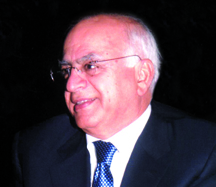Two different Christmas dates
christmas for more than 2.25 billion christians represents a wonderful religious and family occasion, a beautiful anniversary in its meanings, and today its joy even in secular countries, is a feast of peace and love, and a public holiday.
nevertheless, christmas has two different dates, the first on the 25th of december, and it is followed by all the anglican, protestant, and catholic churches. the second falls on january 7 and is celebrated by the eastern o r t h o d o x churches in russia, ukraine, serbia, ethiopia, eritrea, greece, cyprus, egypt, and others.
the modern calendar began with the roman emperor “julius caesar”, who discovered, after his occupation of egypt that the pharaohs had an accurate calendar, superior to the romans, so he used it and made the common year 365 days and a quarter of the day (6 hours), and the leap is 366 days which comes every four years as a result of the accumulation of six hours.
he also made the number of days in the months 30 or 31 except for february 29 days but 30 days during the leap year, and the implementation began in the year 45 bc.
the famous monk dionysius called in the middle of the sixth century for the birthday of christ to be the beginning of the calendar instead of the roman calendar, which started with the founding of the city of rome in 753 bc.
europe and then christendom adopted the year of the birth of christ as the beginning of the year since 532. it became clear later that the monk made a mistake in his calculations, as the date he set for the birth of christ included a difference of about 4 years after the true date of birth, but the julian calendar continued to follow for more than 17 centuries until it was found from accurate astronomical calculations that the orbital year is 11 years longer than the julian year one minute every 365 days and a quarter of the day, which equates to a full day every 128 years.
accordingly, pope gregory xiii, whose current calendar was named after him, issued an order to amend the accumulated error, so that religious occasions could be celebrated at their correct times, and so people slept on thursday, october 4, 1582, and woke up on friday, october 15, 1582.
the english church opposed the amendment until 1752 ad when it was convinced of the correctness of adding the eleven days. however, the eastern orthodox churches remained insistent on religious holidays according to the julian calendar, until today, and followed the gregorian calendar in the rest of the matters, and thus we have the birthday of christ with a difference of between 13 and 14 days.
at the beginning of the twentieth century, the whole world began to follow the gregorian calendar for its accuracy, with the chinese, the indians, the japanese, the muslims, and others abandoning their calendars while continuing to follow them on religious occasions.
the iranian solar calendar, jalali, established by the astronomer and poet omar khayyam, at the order of sultan jalaluddin (1074 ad) is considered the most accurate calendar as the error rate is only one day for every 3.8 million years, as opposed to one day for every 3300 years in the gregorian calendar. the months of the first year consist of 31 days and the next five of 30 days, and the latter being 29 days in a common year and 30 in a leap year and march 21 will be the beginning of the year or the nowruz festival.
we take this opportunity to offer our best christmas greetings to all christians. we thank dr. hussein daoud for his rich additions to this article.






